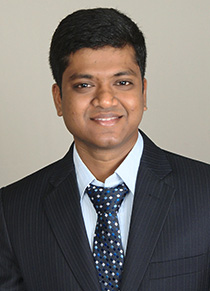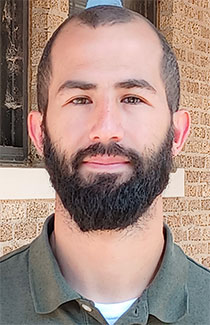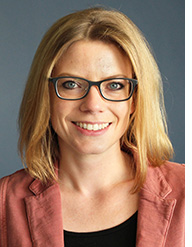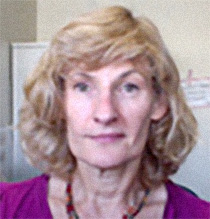 Young Professionals Symposium
Young Professionals Symposium
Tuesday, May 23, 2023, 6-8 pm
On Tuesday evening there will be a Young Professionals reception and panel organized by Viktoriia Babicheva. [Join us for an exciting event aimed at young professionals looking to kick-start their careers in academia, government labs, or industry. Our speakers will share insights and tips on how to navigate each sector and succeed in your chosen field.] This event is open to everyone but is capped. To secure a spot you must use the conference registration portal and register for this event (no fee).
Chair: Viktoriia Babicheva (UNM)
Panelists for the ICOPS 2023 Young Professionals Reception & Panel:
Muhammed Zuboraj
Los Alamos National Laboratory
 Dr. Muhammed Zuboraj is an early career scientist at the Los Alamos National Laboratory. He completed his PhD in Electrical and Computer Engineering from The Ohio State University, on design of novel slow wave structures, an essential component for beam-wave interaction in Traveling Wave Tubes (TWTs).
Dr. Muhammed Zuboraj is an early career scientist at the Los Alamos National Laboratory. He completed his PhD in Electrical and Computer Engineering from The Ohio State University, on design of novel slow wave structures, an essential component for beam-wave interaction in Traveling Wave Tubes (TWTs).
Dr. (Muhammed) Zuboraj completed his postdoc at the Los Alamos National Laboratory (LANL), a premier national security lab in USA.
Currently, he is working as technical staff scientist at LANL and is an active member of Applied Electrodynamics (AOT-AE) group where he works on novel applications of electrodynamics such as particle physics, electron and ion beam dynamics, gamma-ray detectors, X-ray and THz sources, and high-gradient acceleration of particles. He is also technical point of contact of C-band Engineering Facility (CERF-NM), a one-of-a-kind high-gradient test stand in the world.
Throughout his career, he has been involved in diverse fields of research including metamaterials, phased arrays, high power microwave sources, electron accelerators, ion sources, free electron lasers etc. He has decade long research experience on electromagnetics/electrodynamics and has built collaboration across academia and national laboratories.
He has published 15 peer-reviewed journals and more than 20 conference papers in different fields. He also serves as active reviewer of IEEE Transactions on Electron Devices, IEEE Transactions of Plasma Science, IEEE Transactions of Antennas and Propagation, Optics Express, Physical Review and Applied Physics Letters. He is also a member of IEEE and American Physical Society.
Matthew T. Domonkos
Verus Research
 As a recognized leader in high-power microwave (HPM) technologies and high-energy density plasma sources with over 20 years’ experience in government research laboratories and industry, Dr. Domonkos serves as the Senior Director of Nuclear Enterprise Sciences at Verus Research. Matt previously led the High Power Systems Group and the Tactical Systems Development portfolio at Verus Research which seeks to equip warfighters and law enforcement with non-lethal counter-electronics capabilities.
As a recognized leader in high-power microwave (HPM) technologies and high-energy density plasma sources with over 20 years’ experience in government research laboratories and industry, Dr. Domonkos serves as the Senior Director of Nuclear Enterprise Sciences at Verus Research. Matt previously led the High Power Systems Group and the Tactical Systems Development portfolio at Verus Research which seeks to equip warfighters and law enforcement with non-lethal counter-electronics capabilities.
A primary area of emphasis is pulsed power-driven HPM systems for test ranges and specific applications. The science and technology underpinning these systems cuts across many disciplines, paving the way for new applications enabled by HPM and plasma science.
Prior to entering the commercial sector, Matt served as a civilian scientist and program manager in the Air Force Research Laboratory’s High Power Microwave Division. He collaborated on the development of annual technology investment strategies, coordinating high-priority technical objectives among the core-competencies of HPM sources, pulsed power, high-energy density plasmas, and ultrashort pulse lasers. Matt successfully executed multi-million dollar budgets to achieve internal and customer-funded research objectives, employing a combination of government, contractor, and academic scientists and engineers.
Matt also worked in the On-Board Propulsion Branch at National Aeronautics and Space Administration’s John H. Glenn Research center, where he developed advanced diagnostics for ion and Hall propulsion systems. Matt has been sought for peer review of major research solicitations within the Department of Defense, the Department of Energy, and NASA.
Jacob Stephens
Texas Tech University
 Dr. Jacob Stephens received a PhD in electrical engineering from Texas Tech University in 2015 while conducting research at the Center for Pulsed Power and Power Electronics. From 2016-2019, he was with the MIT Plasma Science and Fusion Center as a post-doctoral researcher and staff scientist. In 2019 he returned to Texas Tech University as an assistant professor, where is currently conducting research in pulsed power, high power microwaves, plasma science, and associated technologies.
Dr. Jacob Stephens received a PhD in electrical engineering from Texas Tech University in 2015 while conducting research at the Center for Pulsed Power and Power Electronics. From 2016-2019, he was with the MIT Plasma Science and Fusion Center as a post-doctoral researcher and staff scientist. In 2019 he returned to Texas Tech University as an assistant professor, where is currently conducting research in pulsed power, high power microwaves, plasma science, and associated technologies.
Since returning to Texas Tech, he has been responsible for more than $2M is externally supported research from US-DoD and US-DoE sponsors. He was also the recipient of the 2022 Air Force Office of Scientific Research Young Investigator Award. Jacob’s current research activities include novel HPM source topologies for realizing 1+ GW output power at and above X-band frequencies, novel nonlinear transmission line topologies for scalable HPM sources, and modeling of breakdown in complex gases via the application Boltzmann equation models.
Katharina Stapelmann
North Carolina State University
 Dr. Katharina Stapelmann is an assistant professor of nuclear engineering at North Carolina State University. She received her Ph.D. in electrical engineering from Ruhr University Bochum, Germany, in 2013, where she continued as PostDoc (2014) and assistant professor of electrical engineering (2015-2017) before she joined NC State in 2017.
Dr. Katharina Stapelmann is an assistant professor of nuclear engineering at North Carolina State University. She received her Ph.D. in electrical engineering from Ruhr University Bochum, Germany, in 2013, where she continued as PostDoc (2014) and assistant professor of electrical engineering (2015-2017) before she joined NC State in 2017.
Stapelmann’s research interests lie in the experimental investigation of generation and transport of reactive species for life science applications, e.g. plasma medicine and plasma agriculture. Stapelmann is Mercator Fellow (DFG), member of the board of trustees of the German national center of plasma medicine, and serves on the International Advisory Board of the Journal Plasma Processes and Polymers. In 2022, she was awarded with the Goodnight Early Career Innovators Award and with the Early Career Award in Plasma Medicine. In 2023, she was invited to attend the German-American Frontiers of Engineering Symposium, co-hosted by the German Humboldt Foundation and the American National Academy of Engineering.
Chelsea
Liekhus-Schmaltz
Zap Energy Inc
 Dr. Chelsea Liekhus-Schmaltz is a Senior Research Data Scientist at Zap Energy Inc where she leads a team of data scientists and engineers studying shear flow stabilized Z-pinches.
Dr. Chelsea Liekhus-Schmaltz is a Senior Research Data Scientist at Zap Energy Inc where she leads a team of data scientists and engineers studying shear flow stabilized Z-pinches.
She received her PhD from Stanford University in ultrafast physics and studied ultrafast chemistry as a postdoctoral scholar at the University of Washington. During that time she primarily worked at X-ray facilities handling large scale and complex data sets. She then joined Zap Energy and transferred the data science techniques she used for analyzing quantum chemistry data to plasma physics data.
Nichelle Bennett
Sandia National Labs
 Nichelle Bennett is a principal member of technical staff at Sandia National Laboratories working in the Inertial Confinement Fusion and Target Design group where she researches power-flow and target designs for Sandia’s Z machine. Her research history includes experimental, theoretical and computational physics support in the areas of plasma generation and dynamics, z-pinch target design, dense plasma focus devices, particle beam accelerators, pulsed-power drivers, high-power radiographic diodes, particle beam and plasma jet transport.
Nichelle Bennett is a principal member of technical staff at Sandia National Laboratories working in the Inertial Confinement Fusion and Target Design group where she researches power-flow and target designs for Sandia’s Z machine. Her research history includes experimental, theoretical and computational physics support in the areas of plasma generation and dynamics, z-pinch target design, dense plasma focus devices, particle beam accelerators, pulsed-power drivers, high-power radiographic diodes, particle beam and plasma jet transport.
She has supported Sandia’s Radiographic Integrated Test Stand, URSA linear-transformer-driver accelerator, and Hermes-III accelerator. She has also supported Los Alamos National Laboratory's Plasma Liner Experiment, DARHT, and Scorpius project and collaborations at the Nevada National Security Site. Her notable contributions include increased understanding of electrode plasma formation and evolution, magnetized transport, beam-target fusion yield, and plasma-induced impedance collapse.
